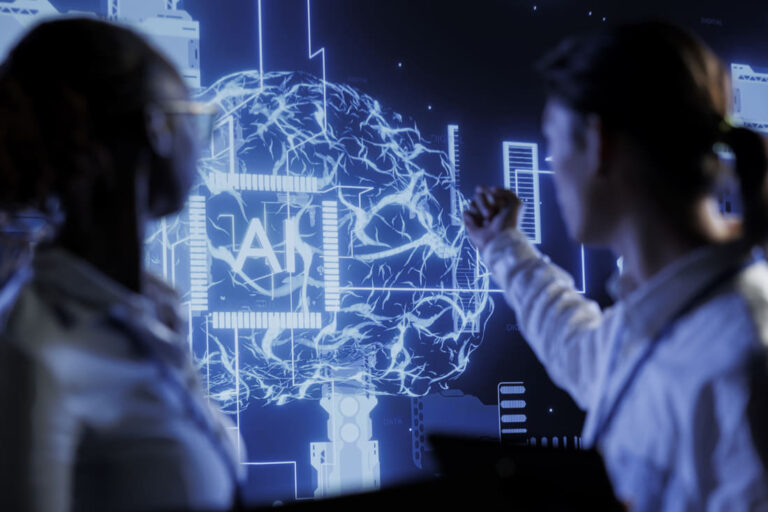Until a few years ago, scientific work depended heavily on patience and repetition: collect data, analyze it, test hypotheses and, hopefully, find something interesting. AI for research doesn't eliminate that process, but it does accelerate and enhance it.
The main difference is that AI learns from data and is able to detect patterns invisible to the human eye. This allows scientists to spend more time interpreting results and less time on repetitive tasks.
Tabla de contenidos
Where does AI fit into scientific research?
Artificial intelligence (AI) has become an indispensable ally for researchers. We are no longer just talking about algorithms that process data, but rather tools that support scientists in almost every phase of their work: from information searches, through experimentation, to the communication of results. Thanks to its analytical, automation, and content generation capabilities, AI is redefining the way we produce and share scientific knowledge.
Applications of AI in scientific research
1. Data collection and organization
In many disciplines, data is growing at a rate that's impossible to manage manually (genomes, medical images, astronomical observations, etc.). This is where AI algorithms come into play, classifying, sorting, and cleaning the information so scientists can start from a more reliable foundation.
2. Analysis and search for patterns
This is probably the most well-known aspect: AI sifts through vast databases and finds relationships that would be invisible to the naked eye. One example is bioinformatics, where AI models are used to discover correlations between genes and diseases.
3. Simulation and prediction
In physics and climatology, researchers use AI models to simulate complex scenarios, from particle behavior to the evolution of climate change. The advantage is that these simulations are faster and allow hypotheses to be tested without the need for costly initial experiments.
4. Automation of experiments
More and more laboratories are incorporating intelligent systems that automate routine tasks, such as measuring samples or recording variables. This reduces human error and accelerates research.
5. Interpretation of results
Some AI systems not only process data, but also offer natural language explanations or clearer visualizations to help scientists better understand the findings.
6. Automation of bibliographic searches
Locating quality scientific literature is a constant challenge. AI makes it possible to automate searches in academic databases, filtering relevant articles, identifying high-impact literature, and organizing references according to thematic or methodological criteria. This optimizes the researcher's time and ensures more direct access to key information.
7. Writing with personalized style
Advanced language models can be trained with a researcher's own texts, learning their academic writing styleIn this way, AI can write drafts, introductions, or conclusions that maintain the stylistic and conceptual coherence of the original author, facilitating the development of articles and proposals.
8. Generation of graphic and visual content
Beyond text, AI is capable of creating infographics, diagrams, and slideshows Customized and professionally designed. This allows for communicating scientific results in a more engaging and accessible way, both in academic and outreach settings.
9. Critical review and comparison with literature
AI can also function as a automatic reviewer, comparing a manuscript with existing high-impact literature. This highlights potential inconsistencies, biases, relevant omissions, and strengths that can improve the article's quality before submitting it to a journal.
10. Grouping ideas and conceptual diagrams
When working with large volumes of information, AI can group related concepts and translate them into diagrams, concept maps or schemes that allow you to visualize connections between ideas and facilitate a global understanding of a topic.
11. Synthesis of information and accessible dissemination
Another of the great contributions is the ability to summarize complex content in more digestible formats. AI can generate executive summaries, podcast scripts, or informative narratives that bring specialized knowledge to broader audiences.
As you can see, artificial intelligence is not limited to a specific aspect of science: accompanies the researcher from the first bibliographic search to the final dissemination of the results, integrating into the entire cycle of scientific production.
Advantages of using AI in science
- Speed: months of work are reduced to hours or even minutes.
- Precision: lower margin of error in data analysis.
- Enhanced creativityBy freeing up time from routine tasks, scientists can focus on new questions and hypotheses.
- Interdisciplinary collaborationAI enables teams from different areas to work on the same data model, facilitating joint discoveries.
Current challenges and limits
Not everything is perfect, and it is important to recognize the challenges:
- Data quality: If data is incomplete or biased, AI can generate erroneous conclusions.
- Explainability: Many algorithms operate as a “black box” and it is not always easy to understand how they reached a conclusion.
- Unequal access: Not all research centers have the infrastructure to implement advanced AI.
Therefore, in addition to knowing the tools, it is crucial learn to use them critically and responsibly.
The future of AI research
The next decade will bring even more integration between artificial intelligence and science: from virtual teachers that support the teaching of complex concepts up to virtual scientific assistants that will help throughout the research process.
At Maxymia, we believe the future of science lies in learning to work hand in hand with AI. And you don't have to wait until tomorrow: you can start acquiring these skills today.
Find out more at Maxymia!


